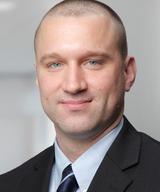Editor: What exactly is Personalized Medicine (PM)?
Clower: PM is the use of drugs or other medical devices and technologies, specifically tailored to an individual’s genetic makeup, to hasten the diagnosis and treatment of disease. Today, technologies surrounding PM are rapidly advancing. We are now able to exploit information obtained from a patient’s genetic and proteomic makeup, in relation to environmental factors that may affect a patient’s health, to prevent, diagnose and/or treat disease.
Traditional or generalized medicine, on the other hand, exercises a trial-and-error approach to diagnosis and treatment. When seeking treatment, a doctor may prescribe a drug at a certain dose to later learn that the dosing was ineffective or, worse yet, that the patient does not respond to the drug at any concentration, and therefore a different drug has to be prescribed. The goal of personalized medicine is to make the diagnosis faster and treatment more efficacious to ensure patient compliance and health.
Editor: How does PM fit into the current landscape of the biomedical business?
Clower: There’s great profit potential because the marketplace has demonstrated a need for growth. Take adverse drug reactions, for example; approximately two million people in the U.S. suffer an adverse consequence from taking a drug that is incompatible with their pharmacogenomic profile. PM, by definition, is poised to help shrink these numbers, which imparts great potential for investors to grab onto that need and capitalize.
Editor: What can be done to protect innovative technologies in the field of PM?
Clower: When investing in PM, investors typically seek strong patent protection; otherwise, they would have to rationalize investing in a technology that may be vulnerable to market competitors. Selecting qualified patent counsel is a good first step in protecting innovative PMs, as technically proficient counsel will understand the invention and its various permutations in concert with keeping abreast of rapidly evolving patent laws – ultimately saving time and money.
Editor: Please discuss some recent PM-related case law.
Clower: Before discussing the latest PM decisions, we must first address some underlying cases. Association of Molecular Pathology v. Myriad and Mayo v. Prometheus are two Supreme Court cases that, in addition to addressing exclusions to patent eligibility, e.g., products of nature, laws of nature and abstract ideas, also entertained factual scenarios borne out of PM innovations.[1]
With those two cases in mind, we can better understand the decisions in In Re Roslin and Ariosa Genetics v. Sequenom. The Roslin case was decided by the Court of Appeals for the Federal Circuit in May 2014, and involved a claim directed to what we remember as “Dolly the sheep,” but more accurately, the claims were directed towards a cloned mammal. The process of generating such a clone involves a number of steps, but simply put, it involves the removal of a nucleus from a somatic cell and implanting it into an egg donor, of which the nucleus has been previously removed. The resulting embryo, which is a genetic clone, is then implanted into a surrogate mammal for gestation.
These Roslin claims were found to be patent ineligible because the claimed clone, according to the court, was neither the result of a newly created genetic profile, nor an altered structural variant of the genetic information. The court noted that a “clone” of a natural product is by definition the natural product itself, and thus Myriad applied. This ruling is important as it could be interpreted to call into question the patent eligibility of related PM technologies such as innovations concerning stem cell technologies and regenerative medicine. What we may glean from Roslin is while specific claims to isolated stem cell lines and clones will likely be ineligible for patent protection, perhaps a different manifestation, such as induced pluripotent stem cells, will be patent eligible.
Ariosa Genetics v. Sequenom originated out of the Northern District of California in 2013. The technology involves obtaining a sample from an expecting mother and amplifying the paternal DNA, via cffDNA, for detecting genetic or biochemical abnormalities. The district court noted that the claimed methods merely involve conventional techniques for detecting this type of DNA and therefore did not pass scrutiny under Mayo. More importantly, the court combines the Mayo reasoning with Myriad to strike down the claimed methods inasmuch as the conventional detection methods were employed to detect unmodified, naturally occurring cffDNA vis-à-vis Myriad. This is important because now, at least in the Northern District of California, there is precedent for invoking Myriad to preclude certain methods claims.
Published August 12, 2014.



